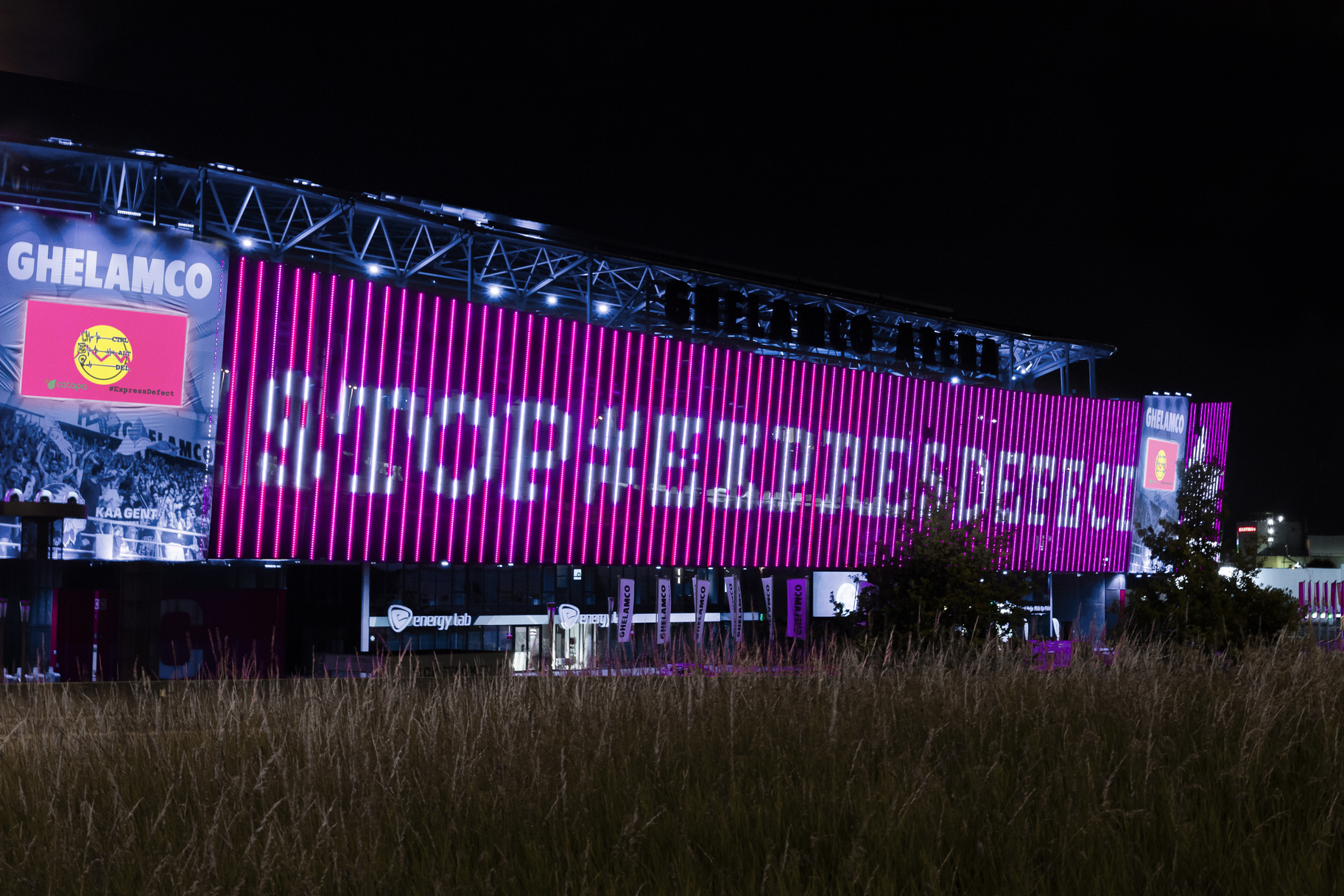From 30 May to 5 June, the Ghelamco Arena in Ghent will for once not be showing an advertisement by KAA Gent. However, it will be a slogan that fits in with CATAPA’s CTRL ALT DEL campaign. This takes place in the context of the ‘European Green Week’, an initiative of the European Commission that is held in Brussels on the same days.
With our campaign, which we are conducting in Flanders and Brussels, we want to tackle ‘planned obsolescence’ and preferably make it disappear as soon as possible. Planned obsolescence is a method mainly used in the ICT sector, where products are deliberately designed with a limited lifespan. Who has not experienced that a mobile phone suddenly functions much slower after an update? Or another example: the printer that breaks down and the repair costs are higher than buying a new one. There are countless methods used by the industry to get you to buy as many new devices as possible. Hence our hashtag #expresdefect. In Dutch ‘expres’ refers to ‘deliberately’ and defect has the same meaning in English.
The main thing to remember is that all those electronics cost you a lot of money and contain many rare (critical) metals. More on that later. But what does this have to do with Europe and European Green Week? The European Green Week will focus on three important aspects of the ‘Green Deal’, namely; circular economy, zero emissions and biodiversity. At first sight, this initiative can only be applauded, but there is something fishy about it (and it smells really bad).
The ‘Green Deal’: A solution that is not there
About the Green Deal, the European Commission says it is a path to a ‘sustainable and transformative growth strategy’. And that is where it goes wrong, we have learned from the past two hundred years that economical growth and sustainability do not go together. On the contrary, growth means plundering the earth in order to obtain the raw materials needed to sustain this endless growth. The extraction of these raw materials leads to ecological, climatic and social disasters.
So what exactly does the EU Commission mean by ‘transformative’ growth? Well, the Commission is making the right decision to leave the fossil fuel era behind. But only to exchange it for an era in which large-scale mining will become the driving force of the growth economy. As mentioned before, the mining of raw materials such as gold, copper, lithium, borate, coltan … (the list is endless) causes great harm to people and the environment. Witness the many accidents involving toxic substances used in the mining industry, which have rendered hundreds of hectares of land uninhabitable, polluted rivers and poisoned people.
Maria Nyuberg stated at the (Re)mining Symposium that “Even if we succeed in dramatically increasing the recycling of critical metals, it will still not be enough to meet the demand required to make the green transition possible“. So we trade one evil (fossil fuels) for another (extracting rare earths). Yet there are plenty of signs that the growth scenario has a dead end. For example, the European Environmental Bureau (EEB) published a report stating that Europe must reduce its material consumption 65% by 2050 if we want to avoid a climate catastrophe.

Dependence on critical metals and strategic autonomy
We now know that Europe will not abandon the ‘endless growth scenario’ and that we will need huge quantities of critical raw metals to make that work. The question is, of course: where are we going to get them? Europe has long realised that depending on other continents for raw materials is not a good idea. Look what has happened to our energy prices since the war between Russia and Ukraine started. That is why the European Commission has decided that we have to tap our own (read European) reserves of critical metals. Or in other words, more mining on the European continent.
Sustainable and responsible mining, the fairy tale that just won’t go away
According to the mining industry and the European Commission, mining can be done in a sustainable way with respect for the environment and people. Studies and reports prove otherwise. Rio Tinto, a mining giant that has been in the news negatively several times (google ‘Mining Rio Tinto accident’) and owner of the Serbian ‘Jadar Lithium Mine’, has bought up 40% of all the land around the possible mining site. This was possible through collaboration with the Loznica city council, which expropriated land and changed its zoning from ‘agriculture or forestry’ to ‘industrial land’. Another tactic to chase away the inhabitants was to raise the land tax significantly. This happened even before the mining project was approved. In response, citizens protested and took to the streets for days until President Vučić was forced to revoke the mining project’s permit.
The events surrounding mining in countries like Northern Ireland, Serbia (but also Spain and Greece) show that mining always results in damage. If not for the environment, then for the communities that are the victims of mining. Conclusion? Green mining or sustainable mining does not exist at all, it’s a dangerous fairy tale.

Want to know more about the alternatives and what you can do in Flanders or Brussels? Find it out in our next blog.



